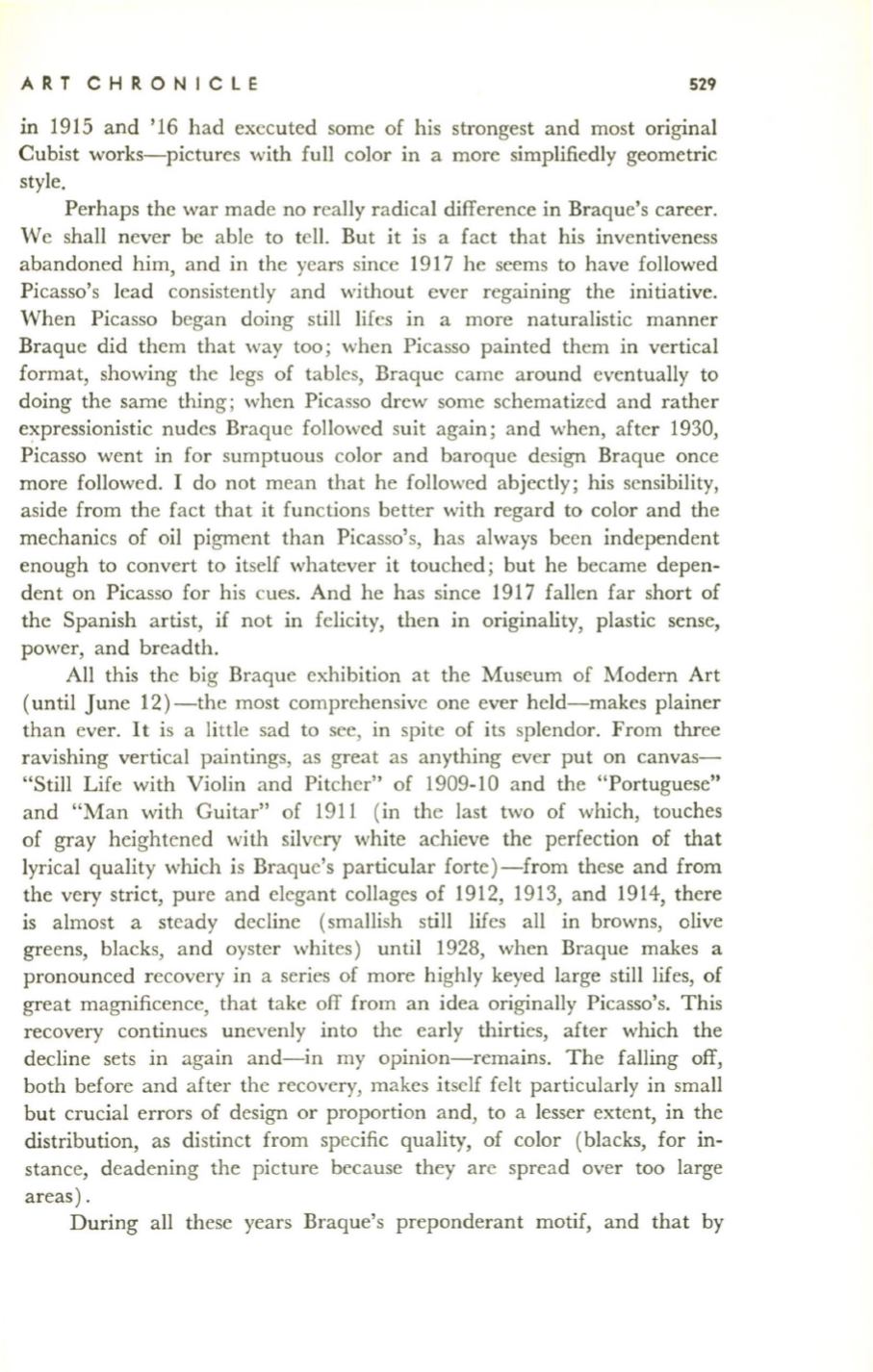
ART CHRONICLE
529
in 1915 and '16 had executed some of his strongest and most original
Cubist works-pictures with full color in a more simplifiedly geometric
style.
Perhaps the war made no really radical difference in Braque's career.
We shall never be able to tell. But
it
is a fact that his inventiveness
abandoned him, and in the years since 1917 he seems to have followed
Picasso's lead consistently and without ever regaining the initiative.
When Picasso began doing still lifes in a more naturalistic manner
Braque did them that way too; when Picasso painted them in vertical
format, showing the legs of tables, Braque came around eventually to
doing the same thing; when Picasso drew some schematized and rather
expressionistic nudes Braque followed suit again; and when, after 1930,
Picasso went in for sumptuous color and baroque design Braque once
more followed. I do not mean that he followed abjectly; his sensibility,
aside from the fact that it functions better with regard to color and the
mechanics of oil pigment than Picasso's, has always been independent
enough to convert to itself whatever it touched; but he became depen–
dent on Picasso for his cues. And he has since 1917 fallen far short of
the Spanish artist, if not in felicity, then in originality, plastic sense,
power, and breadth.
All this the big Braque exhibition at the Museum of Modern Art
(until June 12)-the most comprehensive one ever held-makes plainer
than ever.
It
is a little sad to see, in spite of its splendor. From three
ravishing vertical paintings, as great as anything ever put on canvas–
"Still Life with Violin and Pitcher" of 1909-10 and the "Portuguese"
and "Man with Guitar" of 1911 (in the last two of which, touches
of gray heightened with silvery white achieve the perfection of that
lyrical quality which is Braque's particular forte) -from these and from
the very strict, pure and elegant collages of 1912, 1913, and 1914, there
is almost a steady decline (smallish still lifes all in browns, olive
greens, blacks, and oyster whites) until 1928, when Braque makes a
pronounced recovery in a series of more highly keyed large still lifes, of
great magnificence, that take off from an idea originally Picasso's. This
recovery continues unevenly into the early thirties, after which the
decline sets in again and-in my opinion-remains. The falling off,
both before and after the recovery, makes itself felt particularly in small
but crucial errors of design or proportion and, to a lesser extent, in the
distribution, as distinct from specific quality, of color (blacks, for in–
stance, deadening the picture because they are spread over too large
areas) .
During all these years Braque's preponderant motif, and that by


